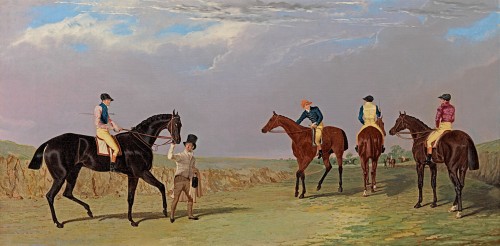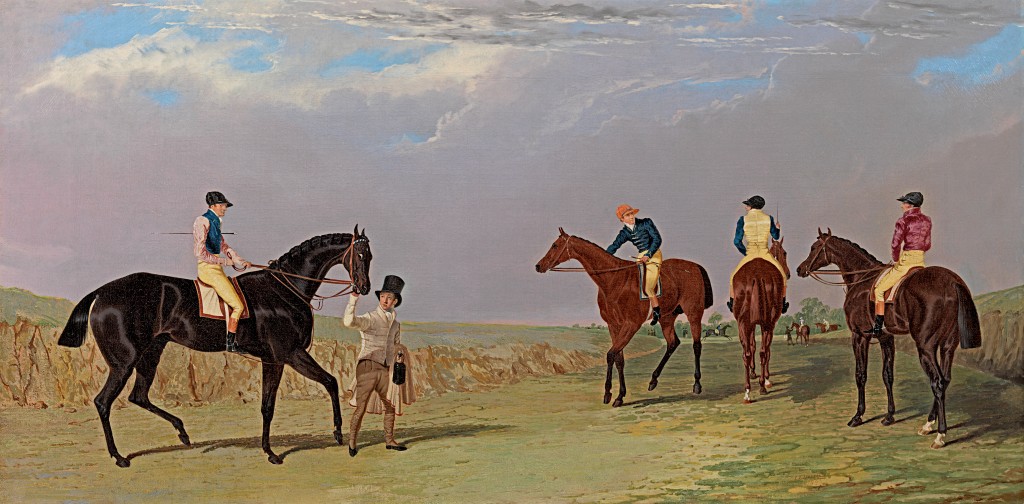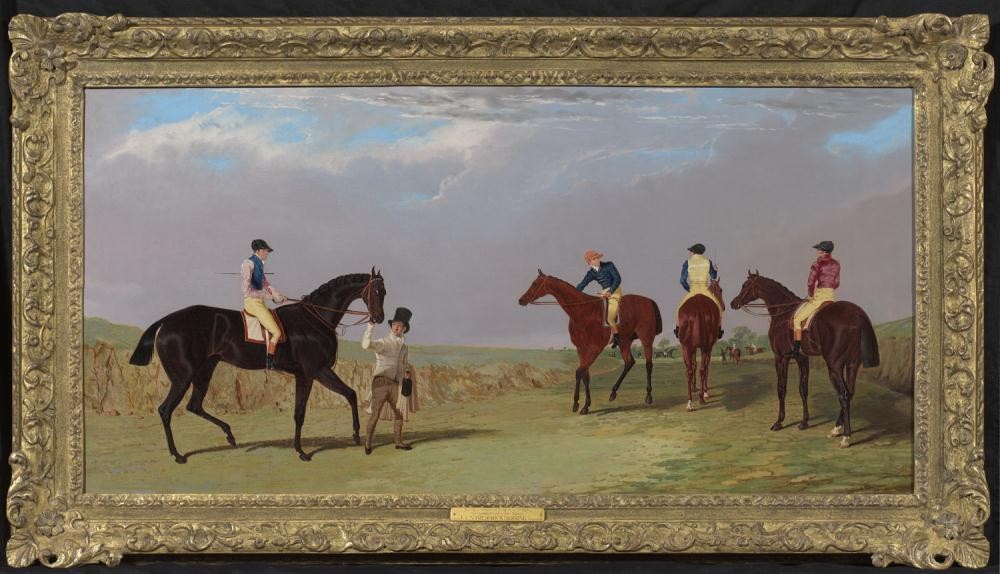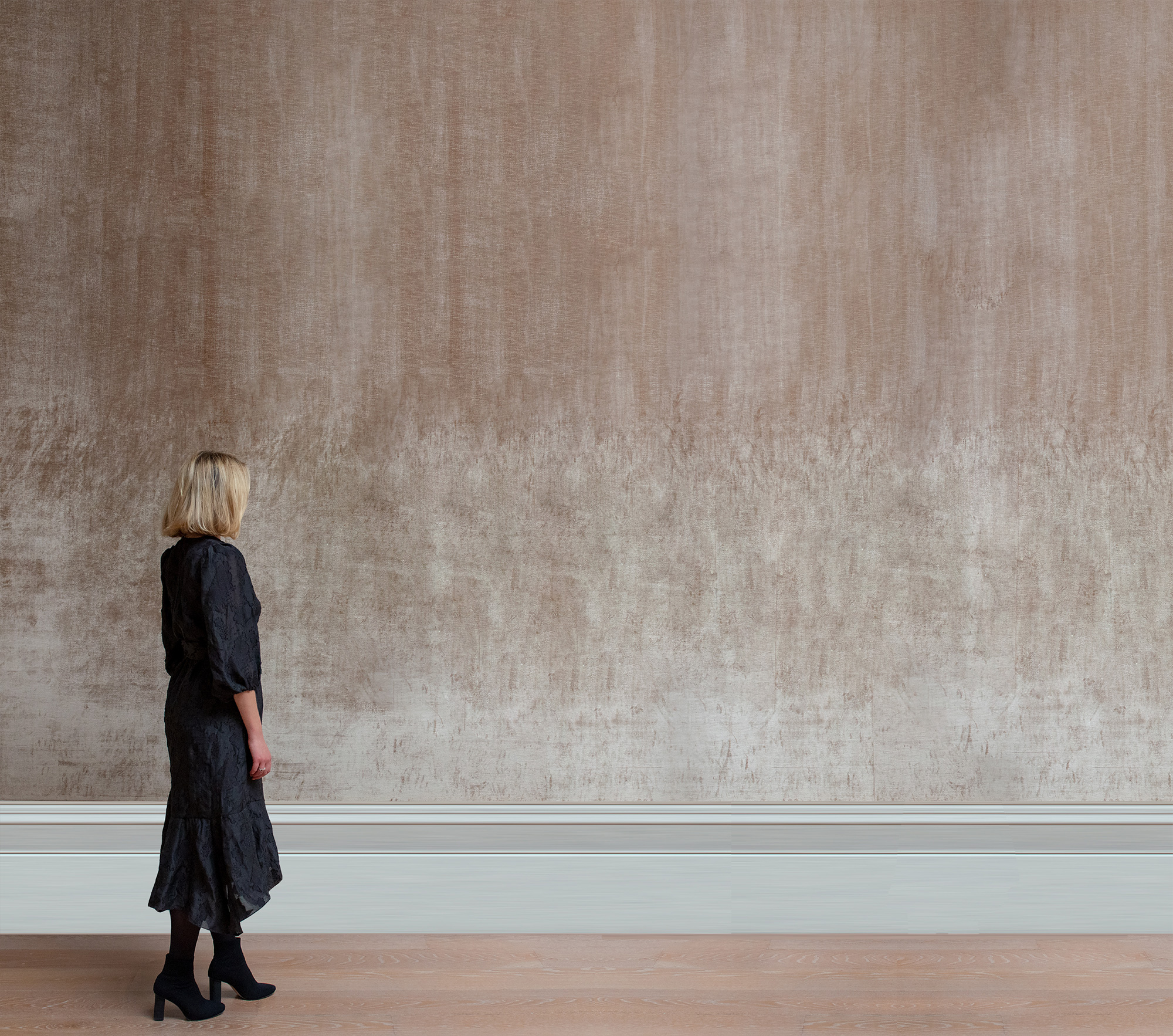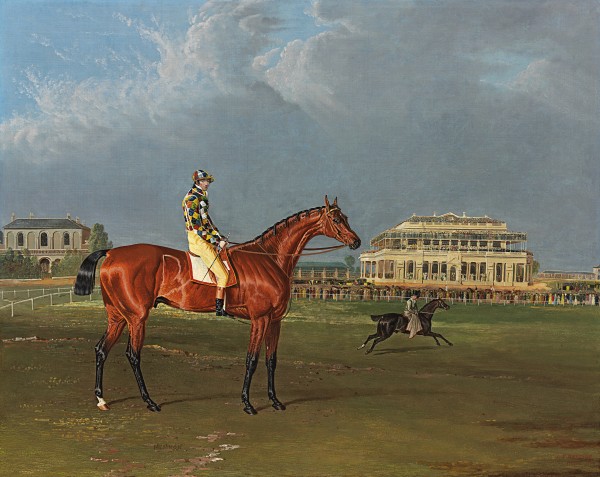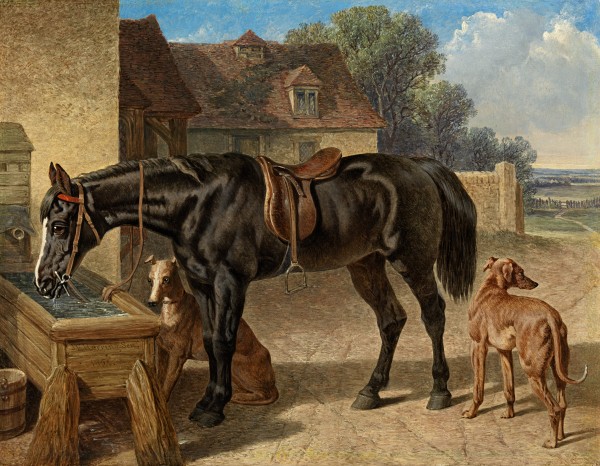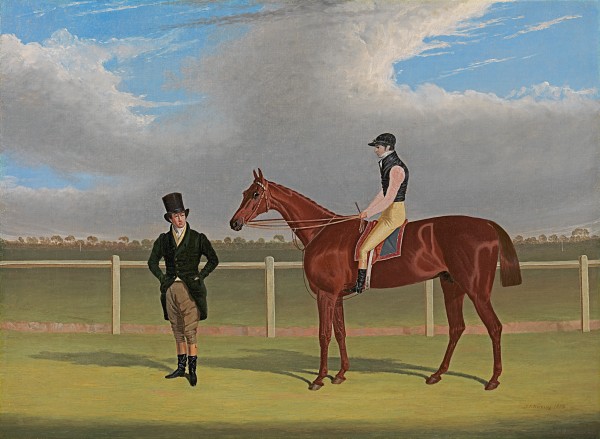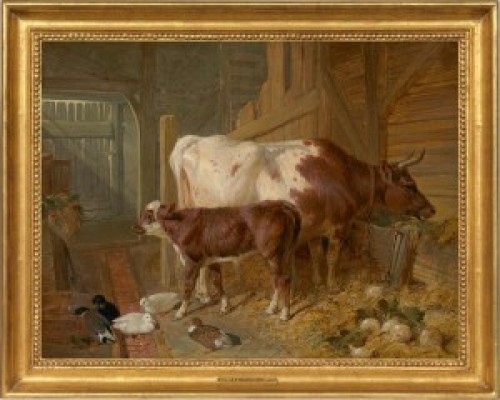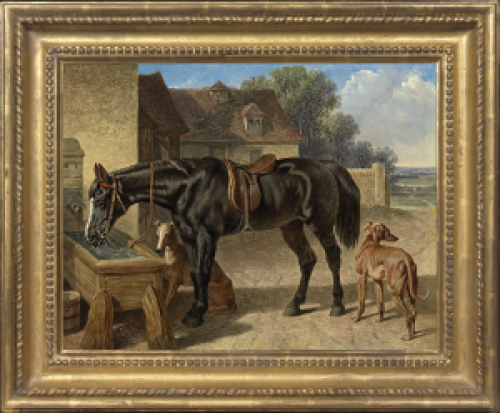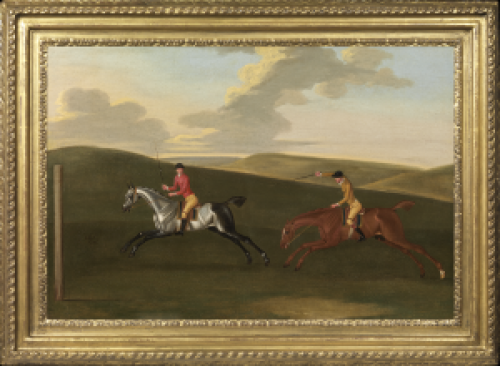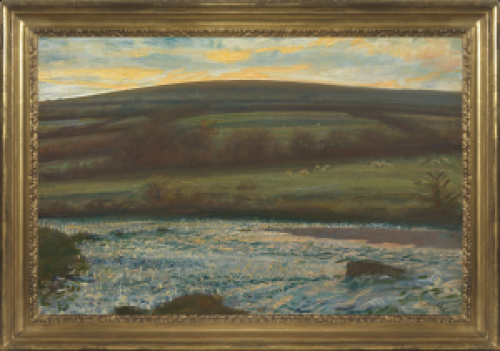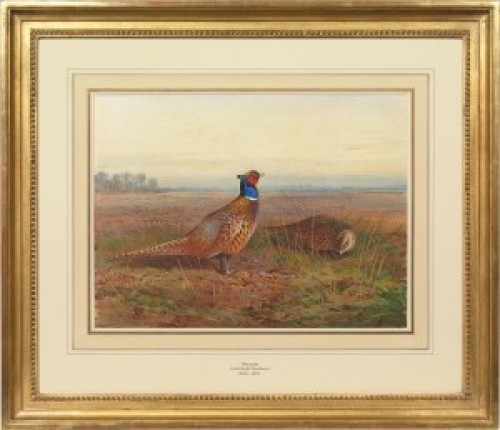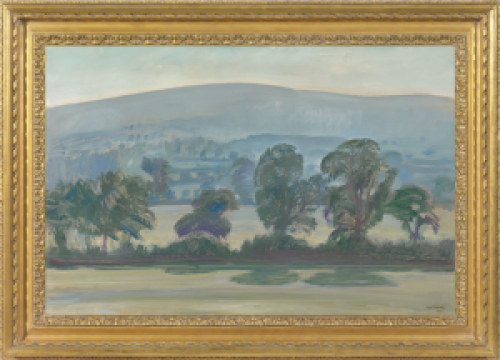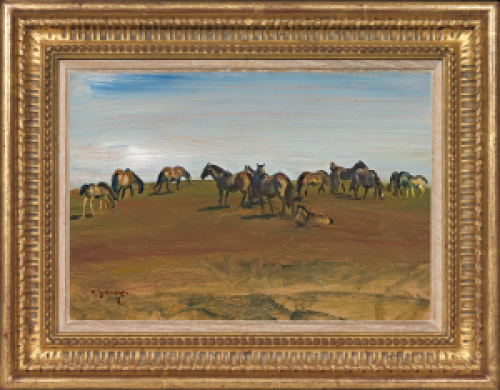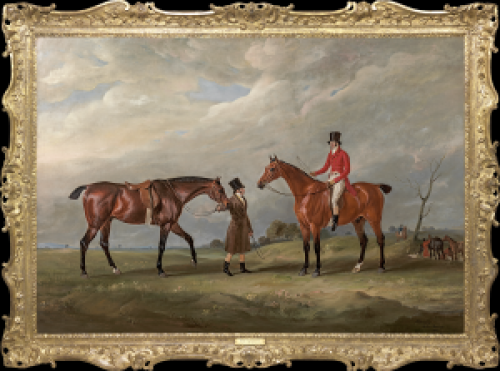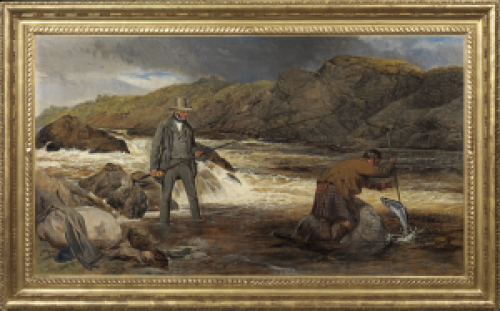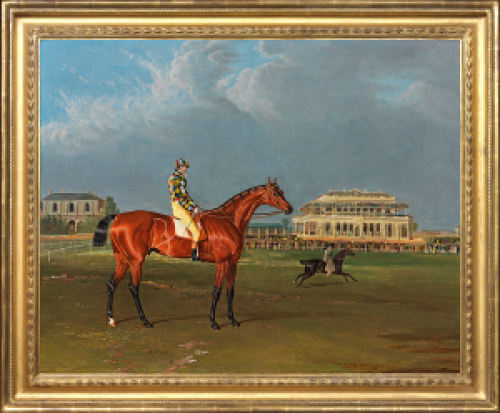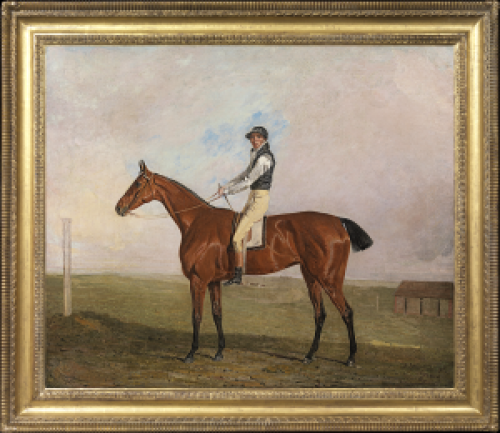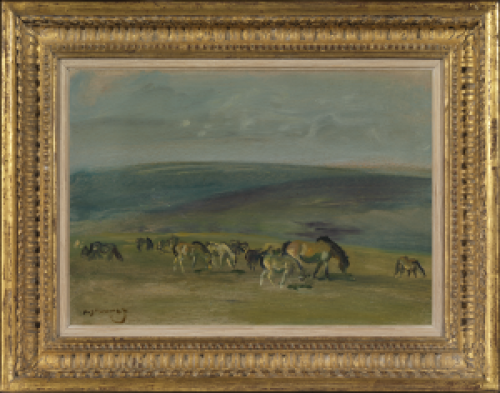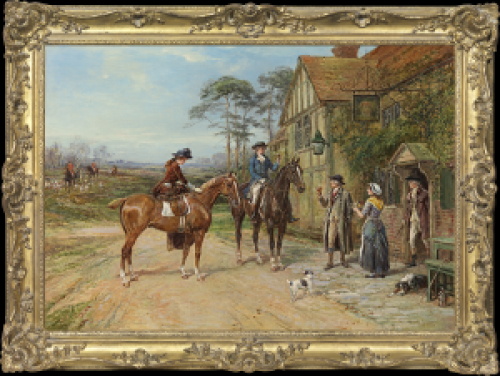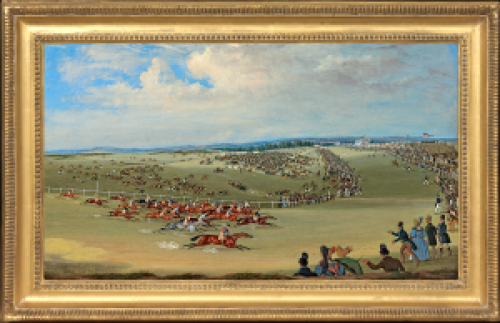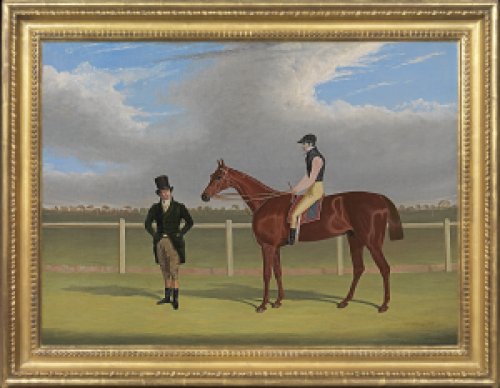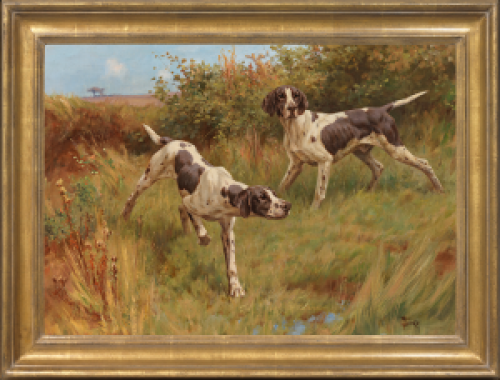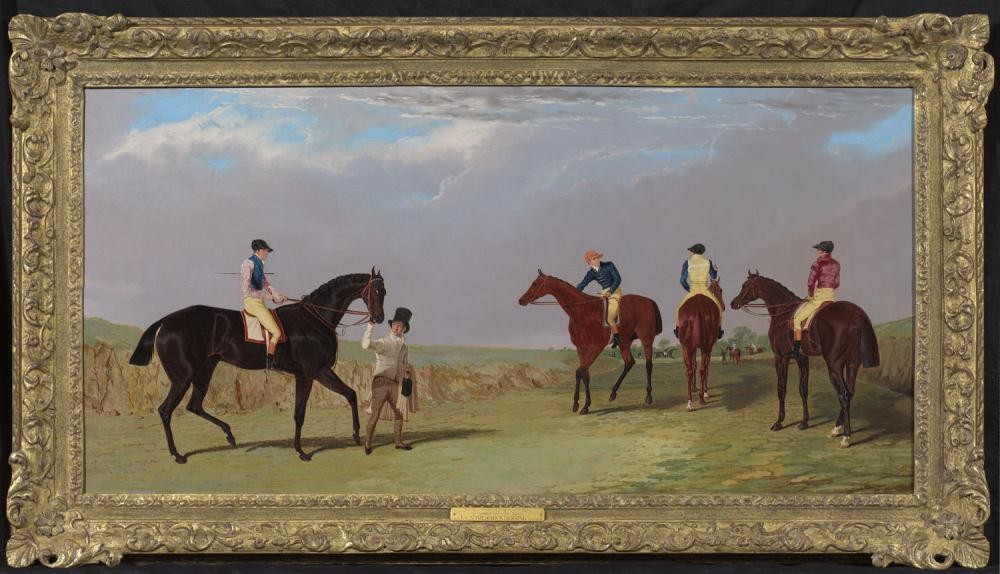JOHN FREDERICK HERRING SNR
Surrey 1795 - 1865 Meopham Park, Kent
Ref: CB 194
The Doncaster Gold Cup 1825: Lottery, Longwaist, Cedric and Figaro
Signed and dated lower right: J.F Herring / 1827
Oil on canvas: 18 x 36 in / 45.7 x 91.4 cm
Frame size: 23 x 40 ½ in / 58.4 x 102.9 cm
In an English eighteenth century style hollow frame
Provenance:
Walter Morrison Jeffords Jnr (1915-1990) and Kathleen H Jeffords (1924-2003), South Padre Island, TX; Christiana, PA; Lexington, KY; Saratoga Springs and New York, until 2004;
Sotheby’s New York, 29th October 2004, lot 7;
Richard Green, London;
Corporate collection, USA;
Richard Green, London, 2019;
private collection, USA
John Frederick Herring Snr lived in Doncaster from 1814 to 1830 and must have witnessed many times the running of the Doncaster Gold Cup. Founded in 1766, it is the oldest genuinely continuous horse race in Britain. For many years the cup was donated by the Stewards of Doncaster Racecourse and was the most lavish trophy offered as a racing prize until Victorian times, when it was rivalled by cups at Ascot and Goodwood.
In 1825 the entrants raced for a Gold Cup which was donated by the Stewards, the Marquess of Londonderry and Sir JVB Johnstone, Bt., and valued in the Racing Calendar at 350 gns. The race was run over two miles and five furlongs. It was won by Mr Whittaker’s brown-bay colt Lottery with George Nelson up. Herring depicts Lottery on the left, a tense, beautiful animal, rolling his eyes as he is led to the start. Lottery (first named Tinker), was bred by Richard Watt of Bishop Burton, Yorkshire in 1820. By Tramp out of Mandane, he was sixteen hands high and had a filthy temper, which persuaded Mr Watt to sell him to Mr Whittaker of Dowthorpe Hall. Despite attacking a farm labourer and anyone else who came to hand, ‘He was indeed the horse of the century, and many of his races were splendid exhibitions of courage and speed’[1].
In the 1825 Doncaster Gold Cup Lottery started at 13 to 8 against. He took the lead, making very severe running all the way to the distance post, where he was challenged by Fulwar Craven’s Longwaist, ridden by Sam Day. Longwaist kept up the pressure but, in a magnificent finish, was defeated by half a neck.
Lottery went on to win the Preston Gold Cup for Mr Whittaker the following year. Longwaist was sold after the Doncaster Gold Cup to the notorious John (‘Jack’) Mytton of Halston Hall, Salop, who ran through his vast inheritance in hunting and racing excesses and died in the King’s Bench debtors’ prison in 1834, aged thirty-eight. Longwaist was sold at the break-up of the Halston stud to Mr Nowell, for whom he won two cups at Newton and came second in the Doncaster Gold Cup of 1828.
The third horse from the left in the painting is the chestnut colt Cedric, bred by Sir John Shelley, by Phantom out of a sister to Parrot. In 1824 he won the Grand Duke Michael Stakes of 1450 gns at Newmarket, beating the Duke of York’s Orion, and in the following year won a match for 300 sovereigns at Newmarket in a breathtaking duel with Lord George Cavendish’s Bizarre.
Figaro, at far right, was a brown colt bred by Mr Joseph Rogers, by Haphazard out of a mare by Selim, and sold in 1819 to Mr Orde Powlett. He ran second in the Derby of 1822 and won the Doncaster Gold Cup in 1823.
Herring’s stylish evocation of Doncaster racecourse was part of the collection of racing art amassed by Walter Jeffords Jnr (1915-1990), son of the financier Walter Jeffords Snr, and his wife Kathleen (1924-2003). The Jeffords were successful racehorse owners and keen aficionados of the Turf on both sides of the Atlantic; their collection spanned the history of racing from Wootton to Munnings. Through his mother, a niece of Samuel D Riddle, Mr Jeffords inherited pictures and memorabilia of Riddle’s Man O’War, probably the most famous American thoroughbred of the twentieth century.
JOHN FREDERICK HERRING SNR
Surrey 1795 - 1865 Meopham Park, Kent
John Frederick Herring was the son of a London merchant of Dutch parentage, who had been born in America. The first eighteen years of his life were spent in London, where his greatest interests were drawing and horses. In 1814 he moved to Doncaster, arriving just in time to see the Duke of Hamilton’s William win the St. Leger. By 1815 he had married Ann Harris; his sons John Frederick Herring Junior, Charles and Benjamin were all to become artists, while his daughters Ann and Emma both married painters.
In Doncaster, Herring earned his living as a painter of coach insignia and inn signs and his contact with a firm owned by a Mr Wood led to his subsequent employment as a night coach driver. His spare time was spent painting portraits of horses for inn parlours and he became known as the ‘artist coachman’. Herring’s talent was quickly recognised and he soon found himself painting hunters and racehorses for the gentry.
In 1830, Herring left Doncaster for Newmarket, where he spent three years before moving to London. During this time, he may have received tuition from Abraham Cooper. In London, Herring got into financial difficulties and was rescued by W T Copeland, who commissioned many paintings including designs used for Copeland Spode bone china. In 1840-41, Herring visited Paris by invitation of the Duc d’Orléans, for whom he painted everal pictures. In 1845, Herring was appointed Animal Painter to HRH the Duchess of Kent, followed by a commission from Queen Victoria, who was to remain a patron for the rest of his life.
Herring spent the last twelve years of his life at Meopham Park near Tonbridge, where he lived as a country squire. He now broadened his subject matter and painted agricultural scenes and narrative pictures, as well as his better known works of hunting, racing and shooting. A highly successful and prolific artist, Herring ranks with Sir Edwin Landseer as one of the most eminent animal painters of the mid nineteenth century. His paintings were very popular and many were engraved, including his thirty-three winners of the St Leger and his twenty-one winners of the Derby. Herring exhibited at the Royal Academy 1818-65, the British Institution 1830-65 and the Society of British Artists (whose Vice-President he became in 1842), 1836-52.
[1] Thomas Henry Taunton, Portrait of Celebrated Racehorses, vol. II, London 1887, p.209.

